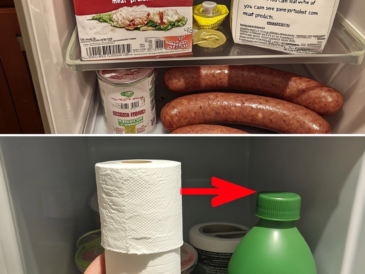In today’s fast-paced world, convenience often takes priority. Leaving your phone charger plugged in all the time might seem like a small habit, one that saves time and effort when you’re in a hurry. However, as my electrician recently pointed out to me, this seemingly harmless practice can have serious consequences that I wish I had known sooner! Here’s why you should always unplug your charger when you’re not using it.
1. Fire Hazard: Small Device, Big Risk
One of the most alarming risks of leaving a charger plugged into the socket without any device attached is that it can become a serious fire hazard. Chargers, even when not connected to a phone or other devices, still draw small amounts of electricity. This constant flow of current can lead to overheating or even cause a fire if there’s a power surge.
How It Happens:
- Overheating: Even when idle, chargers generate heat. If left in a poorly ventilated space or near flammable materials, this heat can build up and cause the charger to burn out or melt.
- Electrical Short Circuits: Damaged chargers or faulty cables can short-circuit, leading to dangerous sparks that could ignite a fire.
Real-Life Warning: My electrician shared stories of homes that suffered from electrical fires because of chargers left plugged in, especially cheap, low-quality chargers. These chargers lack the safety features found in higher-end models and are more likely to overheat or fail. His advice? Always invest in a quality charger and unplug it when not in use.
2. Energy Waste: The Phantom Load Problem
Did you know that leaving your charger plugged in, even when not in use, is silently increasing your electricity bill? This phenomenon is called “phantom load” or “vampire power,” where electronics draw small amounts of energy even when turned off or not in use.
The Bigger Picture:
- Individually: One charger doesn’t use much electricity on its own, but every charger left plugged in across your home contributes to this waste.
- Collectively: Globally, millions of households do the same thing, which results in significant energy waste. In fact, energy experts estimate that phantom loads from electronics account for 5-10% of household energy use.
Environmental Impact:
This waste contributes to higher electricity bills and unnecessary environmental strain. Reducing phantom load by simply unplugging chargers when not in use is an easy way to cut back on wasted energy and help the environment.
3. Charger Longevity: Extend the Life of Your Device
Leaving your charger plugged in without using it can also shorten its lifespan. This constant exposure to electricity causes wear and tear on its internal components, even when not charging your phone.
Signs of Charger Wear:
- Warm to the Touch: If your charger feels warm or hot when unplugged from your phone, it’s a sign that it’s wearing out from constant use.
- Frayed Wires: The cables may begin to fray at the connection points, exposing the wires and increasing the risk of short circuits.
Pro Tip:
Unplugging your charger after each use not only keeps it in good working condition longer but also saves you money on replacements.
4. Sensitive Electronics: Protect Your Devices from Power Surges
Leaving chargers plugged into an outlet exposes them to potential power surges, especially during storms. Even if your phone isn’t connected, a power surge can damage the charger, rendering it unsafe. The next time you plug in your phone, that damaged charger could fry its delicate components, leading to expensive repairs.
Surge Protection:
While some chargers come with built-in surge protectors, it’s not a guarantee. Using a power strip with surge protection can help, but the best protection is simply unplugging the charger when it’s not in use.
5. Form a Simple, Safe Habit
At first, I was skeptical about my electrician’s advice—unplugging chargers after every use seemed like an unnecessary hassle. But after learning about the potential risks and seeing how easy it is to avoid them, it became clear that forming this simple habit is worth the effort.
Building the Habit:
- Set Reminders: If you frequently forget to unplug chargers, set a reminder on your phone or put sticky notes near the outlets as a visual cue.
- Use Power Strips: Power strips with switches allow you to turn off multiple devices at once, making it easier to control your electronics.
- Create Charging Stations: Designate specific areas in your home where devices are charged, and make it a rule to unplug chargers after use in these spots.
Break Time: Ready for More Energy-Saving Tips?
Want to keep your home safe and energy-efficient? Stay tuned for more practical, everyday tips that will help you reduce energy waste, protect your electronics, and save money on your utility bills. Click on the next page to dive into easy-to-follow tips on managing your appliances and optimizing home energy use!
Conclusion: Take Charge of Your Charging Habits
Leaving your charger plugged in without a device attached seems like a small detail, but it comes with hidden dangers. From fire hazards and increased energy bills to shortened charger lifespans and risks to your electronics, unplugging chargers when not in use is a simple habit that can prevent major headaches.
Since my electrician gave me this advice, I’ve made it a point to unplug all my chargers—and now, I’m passing that knowledge on to you. Forming this habit takes only a second but can make a world of difference in your home’s safety, energy consumption, and even your wallet.
Why not start today? It’s time to take charge of your charging habits!




